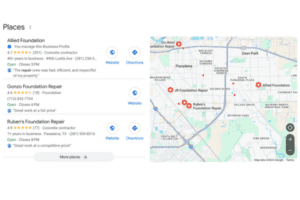In the ever-evolving landscape of the internet, Google continues to innovate and improve its search capabilities to provide users with a more immersive and efficient search experience. One of the latest advancements in this journey is Google’s Generative Search Experience. In this blog post, we’ll delve into what this technology is all about and how it’s changing the way we interact with search engines.
What is Google’s Generative Search Experience?
Google’s Generative Search Experience, also known as GSE, represents a significant leap forward in the realm of search engines. At its core, GSE utilizes generative models, powered by advanced AI and machine learning techniques, to produce more contextually relevant and human-like search results.
Traditionally, search engines have relied on keyword-based queries, returning pages that contain matching keywords or phrases. While this approach has served us well, GSE aims to take search to the next level by understanding the user’s intent and context in a more nuanced way. Here are some key aspects of Google’s Generative Search Experience:
1. Conversational Search:
GSE enables a more conversational and interactive search experience. Instead of static search queries, users can engage with the search engine in a more natural, conversational manner. This means you can ask questions or make requests in a way that feels like you’re talking to a human.
2. Contextual Understanding:
Through its AI-driven algorithms, GSE can better understand the context of a user’s query. It takes into account previous queries, user preferences, and even recent browsing history to provide search results that are more tailored to individual needs.
3. Content Generation:
One of the most exciting aspects of GSE is its ability to generate content in real-time. For example, if you’re researching a specific topic, GSE can provide detailed information on that subject without requiring you to click through to multiple websites. This not only saves time but also provides a more immersive search experience.
4. Multimodal Search:
GSE isn’t limited to text-based search results. It can process various types of content, including text, images, and videos, to offer a more comprehensive set of results. This multimodal approach helps users access information in their preferred format.
5. Improved User Experience:
Ultimately, the goal of Google’s Generative Search Experience is to enhance the overall user experience. By providing more relevant, context-aware results and facilitating natural language interactions, GSE aims to make search faster, more accurate, and more user-friendly.
How Does Google Achieve This?
Behind the scenes, Google employs state-of-the-art deep learning models, including but not limited to variants of the Transformer architecture, to power GSE. These models are trained on vast datasets containing text, images, and other types of content to understand and generate contextually rich search results.
Google also continually fine-tunes and updates its algorithms to improve the accuracy and relevance of GSE. This involves regular model training and feedback from users to ensure that the technology aligns with their evolving needs.
The Future of Search
Google’s Generative Search Experience represents a glimpse into the future of search engines. As technology advances and AI becomes more sophisticated, we can expect search engines to become even more intuitive and personalized. GSE is a significant step forward in this direction, offering a more natural and context-aware search experience for users.
Google’s Generative Search Experience is an exciting development that aims to make search engines more intuitive and responsive to user needs. As this technology evolves, it will undoubtedly change the way we interact with the vast world of information on the internet, making our online searches more efficient and enjoyable than ever before.















